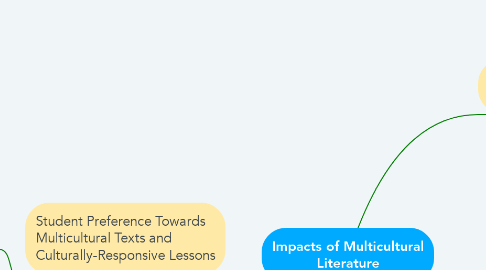
1. Student Preference Towards Multicultural Texts and Culturally-Responsive Lessons
1.1. Lafferty’s study indicates that students are not checking out racially diverse texts from their school library. Their research focused on 5 Southern California high schools and analyzed four years of circulation data. Even though each high school differed in ethnic and racial diversity, the findings were similar. 87.5% of the most circulated texts in the library were books by White authors (not including Hispanic authors) from the U.S. or the U.K.
1.1.1. Lafferty, K. E. (2014). “What Are You Reading?”: How School Libraries Can Promote Racial Diversity in Multicultural Literature. Multicultural Perspectives, 16(4), 203–209.
1.2. This mixed-method study suggests that students prefer culturally-responsive lessons to lessons that are not culturally relevant. Particularly, this study indicates that students tend to prefer lessons which explore their cultural identity rather than culturally-relevant lessons about the identity of other minority groups.
1.2.1. Sampson, D., & Garrison-Wade, D. (2011). Cultural Vibrancy: Exploring the Preferences of African American Children Toward Culturally Relevant and Non-Culturally Relevant Lessons. Urban Review, 43(2), 279–309. https://doi-org.lib-proxy.fullerton.edu/10.1007/s11256-010-0170-x
2. Teacher Education and Pedagogical Practices
2.1. Brown’s research study indicates that Caucasian education candidates’ view of culturally-responsive teaching, multicultural awareness, and sensitivity towards diversity increases when exposed to a diversity course.
2.1.1. Brown, E. L. (2004). What Precipitates Change in Cultural Diversity Awareness during a Multicultural Course: The Message or the Method? Journal of Teacher Education, 55(4), 325–340. https://doi.org/10.1177/0022487104266746
2.2. In this mixed-method study, Agirdag et. al find that teachers from minority backgrounds are correlated with multicultural teaching practices. They also find that teachers who work at schools with a higher minority population are more likely to integrate multicultural curriculum and practice. Moreover, this study suggests that Flemish teachers view religious diversity as crucial in multicultural teaching practices.
2.2.1. Agirdag, O., Merry, M., & Van Houtte, M. (2016). Teachers’ Understanding of Multicultural Education and the Correlates of Multicultural Content Integration in Flanders. Education and Urban Society, 48(6), 556-582.
2.3. Larson et. al’s quantitative study finds that there is a statistically significant positive correlation between teachers with observed “proactive behavior management” as well as “culturally responsive teaching” and positive behavior outcomes for students. Conversely, their study suggests that there is no correlation between teachers’ self-reported efficacy and their observed positive behavior management and culturally responsive teaching.These findings indicate that researchers should be aware of “social desirability bias” in self-reported data.
2.3.1. Larson, K. E., Pas, E. T., Bradshaw, C. P., Rosenberg, M. S., Day-Vines, N. L., & Gregory, A. (2018). Examining How Proactive Management and Culturally Responsive Teaching Relate to Student Behavior: Implications for Measurement and Practice. School Psychology Review, 47(2), 153–166. https://doi-org.lib-proxy.fullerton.edu/10.17105/SPR-2017-0070.V47-2
3. Student Outcomes
3.1. Ford et al. identify the need for more literature with which Black girls can resonate. They indicate a positive correlation for students who read multicultural texts that connect with their racial or cultural identity.
3.1.1. Ford, D. Y., Walters, N. M., Byrd, J. A., & Harris, B. N. (2019). I Want to Read about Me: Engaging and Empowering Gifted Black Girls Using Multicultural Literature and Bibliotherapy. Gifted Child Today, 42(1), 53–57.
3.2. Rozalski et al. find that literature rich with strong characters who overcome obstacles can help students cope with issues in their life as they witness the characters solving problems.
3.2.1. Rozalski, M., Stewart, A., & Miller, J. (2010). Bibliotherapy: Helping Children Cope with Life’s Challenges. Kappa Delta Pi Record, 47(1), 33–37.

